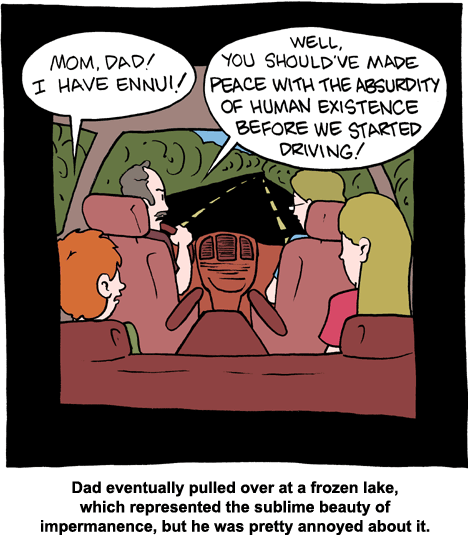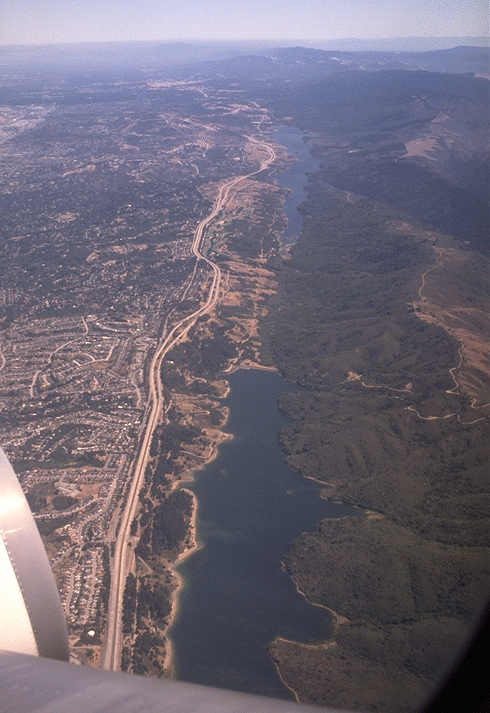 The meme lives... several more up at the home site!
The meme lives... several more up at the home site!
Is This Your Hat?
11 years ago
Miscellaneous thoughts on politics, people, math, science and other cool (if sometimes frustrating) stuff from somewhere near my favorite coffee shop.
 The meme lives... several more up at the home site!
The meme lives... several more up at the home site!
 Can't quit. I can't believe the stuff that becomes "news." This one occured to me because I just murdered a fly that wouldn't stop pestering. Don't tell PETA. (Vidclip here)
Can't quit. I can't believe the stuff that becomes "news." This one occured to me because I just murdered a fly that wouldn't stop pestering. Don't tell PETA. (Vidclip here) And don't forget to visit the orignator of this meme at http://hoekstraisameme.com/ for many more. They've just put up several more.
And don't forget to visit the orignator of this meme at http://hoekstraisameme.com/ for many more. They've just put up several more. (Click for full size... which I just realized is quite close to its actual size!)
(Click for full size... which I just realized is quite close to its actual size!) (Full size here) This is certainly among the most amazing and stunning volcanic eruption images I have ever seen. According to the description of the image, "A fortuitous orbit of the International Space Station allowed the astronauts this striking view of Sarychev Volcano (Kuril Islands, northeast of Japan) in an early stage of eruption on June 12, 2009."
(Full size here) This is certainly among the most amazing and stunning volcanic eruption images I have ever seen. According to the description of the image, "A fortuitous orbit of the International Space Station allowed the astronauts this striking view of Sarychev Volcano (Kuril Islands, northeast of Japan) in an early stage of eruption on June 12, 2009." "To Hoekstra is to whine using grandiose exaggerations and comparisons," according to the home site. This is a funny, funny meme that should not be (and in my mind isn't) limited to Pete Hoekstra; it's epidemic among the republicans. Hat tip to EB Misfit for pointing this out. (Followup: if you're not familiar with "napalm girl," here's the (in)famous photo. Warning: graphic and nauseating, though such an iconic image, might be considered safe for work. Or Not)
"To Hoekstra is to whine using grandiose exaggerations and comparisons," according to the home site. This is a funny, funny meme that should not be (and in my mind isn't) limited to Pete Hoekstra; it's epidemic among the republicans. Hat tip to EB Misfit for pointing this out. (Followup: if you're not familiar with "napalm girl," here's the (in)famous photo. Warning: graphic and nauseating, though such an iconic image, might be considered safe for work. Or Not)
 Context here and here.
Context here and here.




 The top panel of the above image shows a cartogram in which the size of the country is a function of how much CO2 it has emitted; the bottom shows the estimated increase in mortality due to four climate-sensitive health factors: malnutrition, malaria, diarrhea, and inland flooding. (Follow-up: I suspect if you factored in some other climate-sensitive phenomena, such as coastal flooding associated with tropical storms, tornadoes and so on- and certainly if you factor in economic costs- the disparity would not be as extreme. Still, that's a stunning image)
The top panel of the above image shows a cartogram in which the size of the country is a function of how much CO2 it has emitted; the bottom shows the estimated increase in mortality due to four climate-sensitive health factors: malnutrition, malaria, diarrhea, and inland flooding. (Follow-up: I suspect if you factored in some other climate-sensitive phenomena, such as coastal flooding associated with tropical storms, tornadoes and so on- and certainly if you factor in economic costs- the disparity would not be as extreme. Still, that's a stunning image) This one shows "tipping points," where minor environmental changes could lead to positive feedbacks and runaway conditions with dire consequences. So, for example, the blob to the NE (~left) of Australia and SW of (~up from) North America is labeled "ENSO Triggering." ENSO stands for "El Nino- Southern Oscillation." El Nino an La Nina conditions have profound, and largely negative, consequences throughout the Americas. That little blob implies that these conditions would be more frequent and more severe. And it's just one of numerous blobs on the map.
This one shows "tipping points," where minor environmental changes could lead to positive feedbacks and runaway conditions with dire consequences. So, for example, the blob to the NE (~left) of Australia and SW of (~up from) North America is labeled "ENSO Triggering." ENSO stands for "El Nino- Southern Oscillation." El Nino an La Nina conditions have profound, and largely negative, consequences throughout the Americas. That little blob implies that these conditions would be more frequent and more severe. And it's just one of numerous blobs on the map. Sorry, Ian; I don't think we met, but I'm seriously hoping your life turns out better than that cake. Jen over at cakewrecks has been running disasterous gradcakes all week. This is one of my favorites. And what goes better with cake than a nice cup of freshly brewed coffee? What? Alright, who left the pot empty?
Sorry, Ian; I don't think we met, but I'm seriously hoping your life turns out better than that cake. Jen over at cakewrecks has been running disasterous gradcakes all week. This is one of my favorites. And what goes better with cake than a nice cup of freshly brewed coffee? What? Alright, who left the pot empty?

 From Saturday Morning Breakfast Cereal. Criggo is one of my favorite humor sites, where the tagline is "Newspapers are going away. That's too bad." So when I realized I didn't have anything from there in my lineup, I just had to go find something that fit the theme... this one does so admirably.
From Saturday Morning Breakfast Cereal. Criggo is one of my favorite humor sites, where the tagline is "Newspapers are going away. That's too bad." So when I realized I didn't have anything from there in my lineup, I just had to go find something that fit the theme... this one does so admirably. So this doggie would like you to desist from using gelatin desserts to ease the irritation:
So this doggie would like you to desist from using gelatin desserts to ease the irritation: (The title of this post was "I'm getting really sick of this nickname.") From Pets Who Want to Kill Themselves. And speaking of poop, I think I can say with a high degree of confidence that the last thing the world needs is a toilet that decorates...
(The title of this post was "I'm getting really sick of this nickname.") From Pets Who Want to Kill Themselves. And speaking of poop, I think I can say with a high degree of confidence that the last thing the world needs is a toilet that decorates...

 (From Saturday Bulletin) ...and menstrual cycles, which have recently been shown to be susceptable to mathematical analysis: (XKCD)
(From Saturday Bulletin) ...and menstrual cycles, which have recently been shown to be susceptable to mathematical analysis: (XKCD) Then there are the bodies that function just fine, but underwent some quirky development. This young woman (I assume it's a young woman) seems to have taken it all in stride, with a cheeky sense of humor.
Then there are the bodies that function just fine, but underwent some quirky development. This young woman (I assume it's a young woman) seems to have taken it all in stride, with a cheeky sense of humor. (From bmezine, this post. Front page here, but many posts NSFW; I think the name stands for Body Modification e-zine)
(From bmezine, this post. Front page here, but many posts NSFW; I think the name stands for Body Modification e-zine)


 What with budget cuts and all, I imagine many of you are being forced to economize. I hope you are not the one being economized! Have a good week at work, and try to keep in mind that however bad things may get, there's always a high probability they
What with budget cuts and all, I imagine many of you are being forced to economize. I hope you are not the one being economized! Have a good week at work, and try to keep in mind that however bad things may get, there's always a high probability they


Some are generic, but of the media-specific time-space transportation modes, how many can you identify? (9 different shows; click the pic to embiggen)
I would like to go back, not to the Big Bang (which I would assume several scientists would love to marvel at) but before it (maybe a few billion years, give or take). What came before the Big Bang? Was there just a singularity sitting there for all eternity or was the previous universe collapsing in on itself?

Somewhere in the vicinity of 3.5 Billion years ago (give or take a few hundred million years), in a puddle of goo struck by lightning (probably), life formed. Our knowledge about this event is understandably very very shaky, due to both the distance back in time, and the lack of preservation of the kind of biological activity we’re interested in. The rock record isn’t very useful here; past a certain point too much has been metamorphosed, and organic molecules broken down too much to be informative.

I think I will take advantage of the non-limitation to Earth clause and couple that with the time-lapse clause. It might be fun to observe how Martian tectonism quieted down over time, and collecting data from that event would advance our current understanding of tectonics and planetary geology. We know that Mars has been, for all intents and purposes, tectonically quiet for quite a while.

So, there’s no *If* about it. I time travel every day. The thing is, so do most geologists. That’s what we do. Geology is a type of investigative reporting where we piece together stories from hundreds of millions of years ago by extracting eyewitness accounts from whichever rocks happened to be witness to the events that interest us. Being a dastardly sort of geologists, I simply do this by torture. I stick the rocks in a steel chamber, suck the air out, and then blast them with an ion beam until they talk.

This is the Vallecito Conglomerate. It's been metamorphosed, but its sedimentary features are still preserved. It's got big clasts, mostly of vein quartz and banded iron formation, and big trough cross-bedding. It's only found in a small but spectacular part of the Weminuche Wilderness, although there are similar rocks in other places from around the same time. And this one is at least a couple thousand feet thick.

I’d like to travel back to the Lower Cambrian to answer the question – “Why is this rock red?” (...) So, we have a major change in sea water chemistry. We also have the ‘Cambrian Explosion’ occurring at precisely that same time. Up to this point in the Cambrian we have the ’small shelly fauna’ but it is now that the triboltes and echinoderms kick in. This surely cannot be a coincidence.

Churchill may be a unique, lonely place today, but on my Ordovician island it is far lonelier – for it is silent except for the waves lapping on the shore. The silence is occasionally disturbed by tropical thunder, and rarely by giant hurricanes driving monstrous waves and huge boulders against the shore. There are no gull cries, but the smells may not be all that different – no doubt there is rotting seaweed on the Ordovician shores, too. (...) Every time machine should be stocked with nutcrackers, bibs, and a supply of melted butter.

I want to see a mass extinction — a big, catastrophic, geologic-record-punctuating event. The formation of the moon would be really fun, too, but it’s not as controversial anymore (to most people). There are still poorly-understood mass extinctions — in particular, the biggest one of them all: the P-T. I want to see who’s right and who’s wrong, and I want to see what happened, all for myself.

So the first thing I'd do would be to whack on some SPF30, because everyone who works on British geology says "It was like the Caribbean", so there's a good opportunity to combine Serious Research with taking the edge off my Northern European pallour (fearsome predators permitting).

I want to be there while the Silesian Mississippi Valley Type district forms. This is not only the largest MVT Pb-Zn district of the planet with 730 Mt of ore but also there is evidence that the largest district of its kind was formed in an increadibly short amount of time! In the hypogenic karst cavities of the Silesian deposits you can find speleothems (see image) growing up and downwards. The point is they don't grow vertically up and down - they show indication of growing into the direction of fluid flow

Actually if I had a time machine I would go through the whole of geologic time on the spot where I’m on (Nigeria) to see how the land I live on has changed through time. But to narrow down I’ll go for the cretaceous when the Benue trough was evolving. there are still a few important questions to be answered:
 Where I'm talking about, 120 million years ago
Where I'm talking about, 120 million years agoA separate drainage system related to extensional stresses to the southwest evolved which eventually captured the river, and from there the giant canyon was carved in just a few million years. I have many times imagined seeing that first trickle of water that spilled over the low divide, and how it would have become a torrent, and within hours the work of building a new canyon would have begun.
 Coconino at Ordinary High Water Mark wants to tour a wetter environment than the current arid climate of the southwest US... she is going to (along with Anne, next) guide us through the Missoula floods, and the contemporary pluvial lakes that so dominated basin and range during the glacial intervals.
Coconino at Ordinary High Water Mark wants to tour a wetter environment than the current arid climate of the southwest US... she is going to (along with Anne, next) guide us through the Missoula floods, and the contemporary pluvial lakes that so dominated basin and range during the glacial intervals.The repeated Missoula floods (potentially 40+, from the varve-like slackwater deposits in southeastern Washington called the Touchet beds) carved out the Channeled Scablands of eastern Washington. The lakes, coulees, and river channels of the scablands were carved by the massive floodwaters (up to 500 cubic miles) that occurred repeatedly through the Pleistocene. They were identified in the 1920's by Harlan Bretz, who was derided as the flood theory of scablands creation just didn't mesh with the theory of uniformitarianism.

An extraordinary sight: a lake in Death Valley! (visit the post for glorious full-size)
A little after 19,000 years ago, water in Glacial Lake Missoula ruptured the ice dam, and the collected water went rushing downstream at speeds reaching 100 km/hr. Peak discharge in the Spokane Valley has been estimated at 17 +/- 3 million cubic meters per second, and drainage of the lake took several days.

Figure 3. Dry Falls and Grand Coulee near Coulee City, Washington, June 2004. The falls are 122 m high and 5.6 km wide. Photo by the author.
10.000 to 18.000 years ago the great glaciers retreaded for the last time, uncovering a barren landscape, lacking vegetation cover. The basins carved by the glaciers where filled by time with water and mud, transported by rivers still feeded by small glaciers. This mud will form the grey clays. Still more time passes, the climate is warmer, the last ice melted, and the basin now is a lake surrounded by dense forests. One day of 11.000 years ago suddenly a black cloud covers the sky, and a fine, grey dust falls on the lake, where it sinks to the ground and deposits. Some hundred km distant from the lake the Laacher See Volcano erupted, covering half Europe with a small band of distinctive, grey ash.

The geologic event I choose is the isostatic rebound of the Hudson Bay region. At the end of the Pleistocene and the beginning the Holocene, the massive ice sheets covering northern North America began to melt. As the weight of thousands of meters of ice over the Hudson Bay region was removed, the surface began to rise.
As the land continued to rise, new shorelines were repeatedly being formed, as the old shorelines were elevated higher. In some places, over 175 old shorelines ring the present bay level. This is equated to over 300 m over rebound in places. And it is still rising.

I want to see a vibrant ecosystem with big trees. I want to see the water of the Potomac River look like water; I want to go swimming in it. I want to see what bird migration looked like before it dropped off so precipitously. I want to see a passenger pigeon, a carolina parakeet. I want to see for myself what a healthy amphibian population looks like. And bison fording the Potomac in Alexandria...
...And, once I've seen that former world, I can't guarantee that I'd come back.

I'll admit right out that I am curious what it feels like to be in a M7.8 earthquake. So far, my personal experience maxes out at M5.4, which was entirely exciting and not at all terrifying in my book. I suspect M7.8 would be well past the boundary between excitement and fear... (...) I would be so excited to watch the faults of California get drawn in on the map for the first time, outlining mountain ranges, bounding geologic provinces, highlighting the network of hazard that we still strive to understand and mitigate today. And to be able to witness that while also observing the rebuilding of San Francisco...Definitely a time of wonder and excitement, even though it came out of tragedy.

Looking southward from San Francisco along the San Andreas Fault. Picture from here.
Now we jump into the unkown future, and we are able to see the exact unfolding of the next large-caldera-forming eruption at Yellowstone. We are finally able to answer our many questions. When will the next caldera at Yellowstone erupt, how long will the eruption take, where will the ash flows flow, how thick will they be, and how hot? Will we all be on Mars or orbiting in space so we won't be wiped out? Where exactly in the developing Snake River Plain will the caldera form, will the magma come through Yellowstone Lake thus making the normally and hugely explosive eruption even more explosive? These are some of the many questions that occur to me when thinking of the Yellowstone area. I'd prefer to watch this sometime in the distant future, and not too soon on any human scale.

I want to see what's going to happen with Basin and Range in western North America. Will North America remain a single block as Basin and Range spreading subsides? Will a single subcontinent break off and beome a Texas- or Alaska-sized island heading off to the northwest? Or will this region, composed of numerous terranes stitched together over the last 70-80 million years, break up and form a new generation of lithospheric ships, drifting independently on a Mohorovičić sea?

Tear along the perforated lines?

